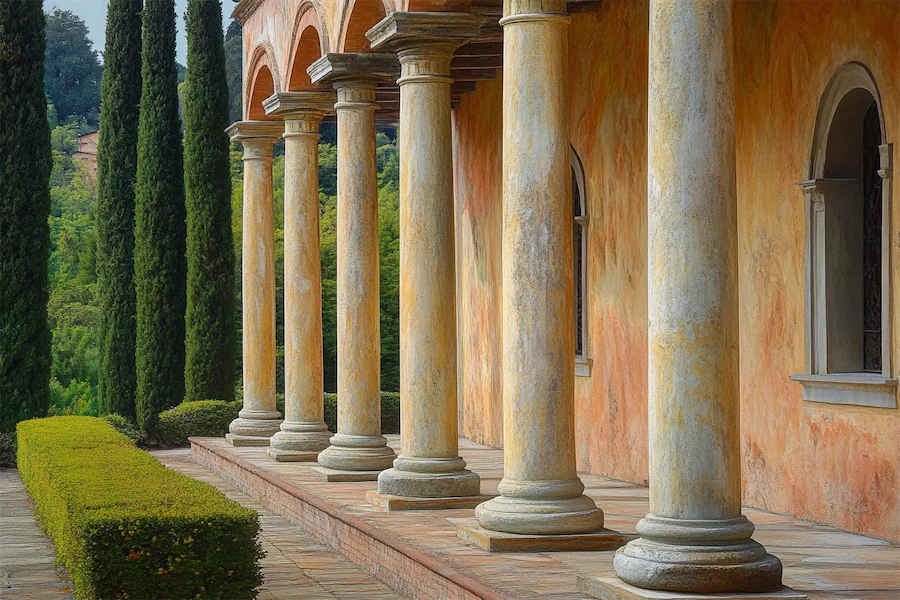Tuscan columns are a classical architectural element known for their simplicity and strength. Originating from ancient Italy, they are considered the most unadorned of the classical orders, which include Doric, Ionic, Corinthian, and Composite.
History and Origins of Tuscan Columns
The Tuscan order traces its roots to the Etruscan civilization in Italy, predating Roman architecture. The Romans later adopted and refined this style, leading to its widespread use in various structures. During the Renaissance, architects codified the Tuscan order as one of the five classical orders, emphasizing its straightforward design and robust proportions.
Key Features of Tuscan Columns
Tuscan columns are characterized by several distinct features:
- Capital: The capital is unadorned, typically consisting of a simple, round echinus and a plain abacus, reflecting the order’s minimalist aesthetic.
- Shaft: The shaft is smooth and unfluted, contributing to the column’s solid and sturdy appearance. It is usually seven diameters high, making it more robust compared to other orders.
- Base: Tuscan columns rest on a simple base, often consisting of a square plinth and a torus molding, providing a straightforward transition to the stylobate (the platform on which the column stands).
- Entablature: The entablature above Tuscan columns is plain, lacking the decorative elements found in other orders, which aligns with the overall simplicity of the design.
Applications of Tuscan Columns
Due to their simplicity and strength, Tuscan columns have been employed in various architectural contexts:
- Military and Utilitarian Structures: Their robust design made them suitable for fortifications, warehouses, and other functional buildings requiring structural integrity without ornate detailing.
- Residential Architecture: In the United States, particularly during the 19th century, Tuscan columns became popular in residential designs, especially in the Greek Revival style. Their unadorned appearance complemented the aesthetic of American front porches and colonnades.
- Public Buildings: The order’s association with strength and simplicity made it a preferred choice for courthouses, libraries, and other civic structures aiming to convey authority and stability.
Considerations When Choosing Tuscan Columns
When incorporating Tuscan columns into architectural designs, consider the following:
- Aesthetic Intent: Tuscan columns impart a sense of understated elegance and solidity, making them suitable for designs emphasizing functionality and subtlety.
- Material Selection: Traditionally crafted from stone or wood, modern interpretations may utilize materials like fiberglass or concrete. The choice of material can affect the column’s durability, maintenance requirements, and overall appearance.
- Proportionality: The proportions of Tuscan columns, with a height-to-diameter ratio of approximately 7:1, should be considered in relation to the overall structure to maintain visual harmony and structural balance.
Conclusion
Tuscan columns exemplify the beauty of simplicity in classical architecture. Their unembellished design and sturdy proportions have allowed them to remain a versatile and enduring element in architectural practice, suitable for various applications that value both form and function.
